Home orchid needs a certain substrate, it does not need garden soil. Therefore, the combination of "garden orchid" does not sound completely clear. Indeed, in our climate, harsh winters, the scorching summer sun and inappropriate soil for it. But there are garden types of flowers adapted to our conditions. Breeders bred frost-resistant orchid varieties that not only survive in our weather conditions, but also in our soil. They are planted in suburban areas, create landscape compositions in gardens, where the tropical queen is the main emphasis.
Content
Description
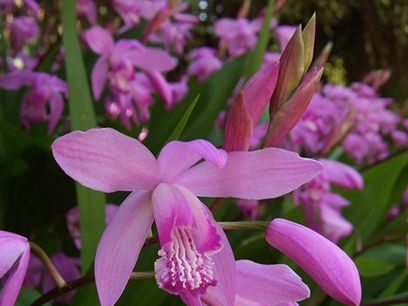
About 15 types of garden orchids grow in our country. Plants have a symbiosis with mushrooms, like trees. The first year, the southern beauty develops due to mycelium, so she adapts to new conditions and land. If the mushroom dries, then the orchid may die. Many species of orchids are very rare, so the cost of one instance is high.
Garden orchids are diverse in flower shape and color. First they resemble fluttering butterflies, then a women's shoe, in the form of a shoe. Inflorescences are racemose or in the form of spikelets, single flowers are also found. Refined flowers are large, asymmetrical. Variegated colors: raspberry, cream, yellow, violet, pink. The color of the petals is striped, spotted, plain, in dot. The lip of flowers is usually darker than the petals.
The roots are powerful, many species have tubers that are located at a shallow depth. The leaves are large, beautifully rounded or pointed at the end with clear veins. They are located on the stem alternately, somewhat reminiscent of the leaves of lilies of the valley. Many varieties have a pleasant smell.
Varieties of garden orchids
In Russian nurseries, species of orchids are bred: palmatokorennik, orchis, and flea. Orchids called "Slipper", one of the most popular and sought after for garden plots.
Palmatokorennik (fingerling)
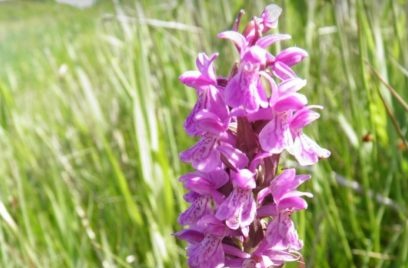
Plants have a palmate tuber, in the form of a palm with spread fingers. It is brown, wrinkled. Every year it dies, in its place a new solid root grows - tuberoid.
Perennials are not tall, stems 30-70 cm long. The leaves are narrow, elongated, grow alternately. The color scheme of leaves from green to spotty colors. The flower stalk is straight, strong, flowers grow densely on it. They are asymmetric, with a diameter of up to 3 cm. The lip is flat, consists of three blades. Two petals and sepals with spots and stripes, colors: purple, white, pink, purple.
Finger sunflower, loves water, does not tolerate drought and stagnation of moisture. The flower prefers neutral soil acidity. Fingertips are grown in the northern and western regions of the country.
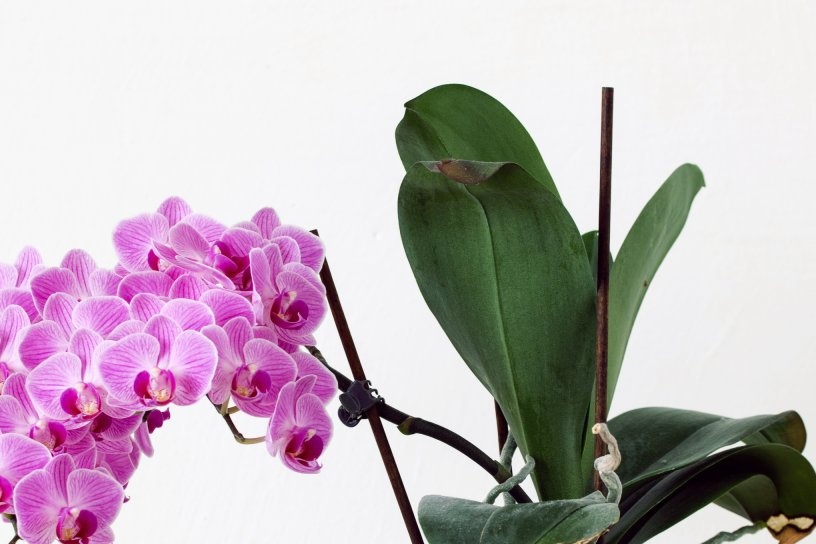 You may be interested in:
You may be interested in:Orchis
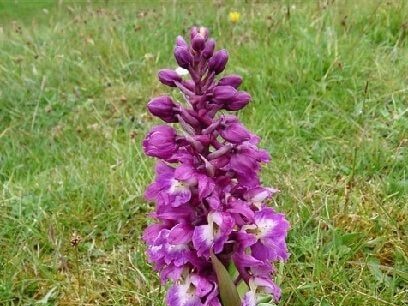
Flowers grow in meadows, in the forest at the edges. Use the plant for medicinal purposes. In the orchis, the roots look like balls, like nucleoli. The leaves are narrow to the top pointed. The flowers are bright, colorful, there are solid colors. On the peduncle, the buds grow densely, the plants have a head of inflorescence.Color of flowers: lilac, white, pink.
Orchis are wild plants that can adapt to any habitat. Bloom all summer.
Tritsirtis ("three tubercles")
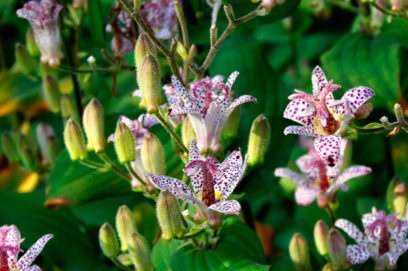
Tritsirtis is a representative of lilac garden orchids. Rhizome is located close to the surface of the earth. The bushes are low, up to 80 cm in length. The leaves are oblong. The flowers are funnel-shaped 4 cm in volume, like lilies or in the form of bells, the petals are covered with specks. Colors: cream, blue, blue, yellow, white, purple, pink. Petals form the shape of a "starfish". One bud grows on each stem.
Tritsirtis feels good in shaded places, sunlight is enough 5-6 hours a day. The plant does not grow on loam.
Slippers
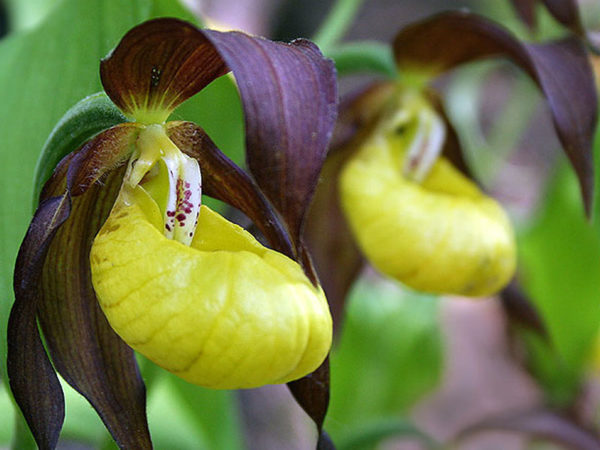
The orchid received the name Venus slippers because of the shape of the lips, resembling a slipper. Similar signs are of the following types: Tsipripedium, Pafiopedilium, Selenipedium, Fragmipedium. Slipper venereal plants belong to the genus Paphiopedilum. Unusual flowers grow in temperate and temperate cold climates.
The shoes have massive roots with small thin roots, not deeply located. Leafy stems, 30-40 cm in length, grow lanceolate leaves on them with pointed ends. Veined sheet plates.
There is 1 large flower on the peduncle, sometimes two of them. The flowers are large, three petals are located on the top, the bottom of the lip is bright in color. In the color there are spotting, mottling, stripes, strokes.
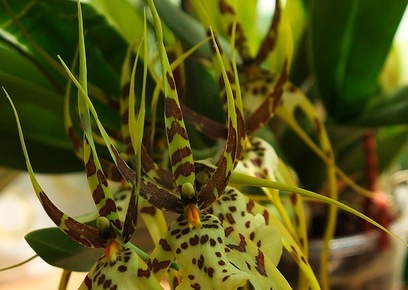 You may be interested in:
You may be interested in:Planting garden orchids
Orchid is a hygrophilous plant. A water-permeable soil is prepared for it, light, neutral or alkaline, less often with low acidity. There must be drainage and a fertile layer. They dig a hole 60 cm in volume, 40 cm deep, lay the mixture layers in it.
Layer order:
- drainage 10 cm - expanded clay, pebbles, broken brick, small stones;
- peat;
- vermiculitis;
- pieces of pine bark (disinfected);
- sand.
A seedling is placed on the tubercle of the mixture, the roots are straightened, gently sprinkled with earth. The kidneys should be at least 1 cm in the ground. After work, the plant is watered around the bush with a small amount of water. After the sedimentation of the soil add bark, mulch on top with moss.
If there is a need for transplantation, then the plants are transferred to another place no more than once every 5 years. Transplant flowers in April or May before flowering. Many varieties live and feel good in one place for 15-20 years, subject to regular top dressing and timely watering.
Site preparation
For a garden beauty, they choose a quiet place without drafts, bright light to give way to partial shade. If the site is open and the sun burns all day, then you need to make a canopy or shelter so that the orchids do not burn out from the sun.
You can not choose areas where moisture constantly accumulates after irrigation or rain. Soil is chosen light so that it absorbs water well.
Types of shoes
A distinctive feature and uniting orchids in a group called "Slipper" is a lip in the shape of an elegant shoe. Usually this is a large protruding part of the flower, distinguished by a bright color.
Gisela
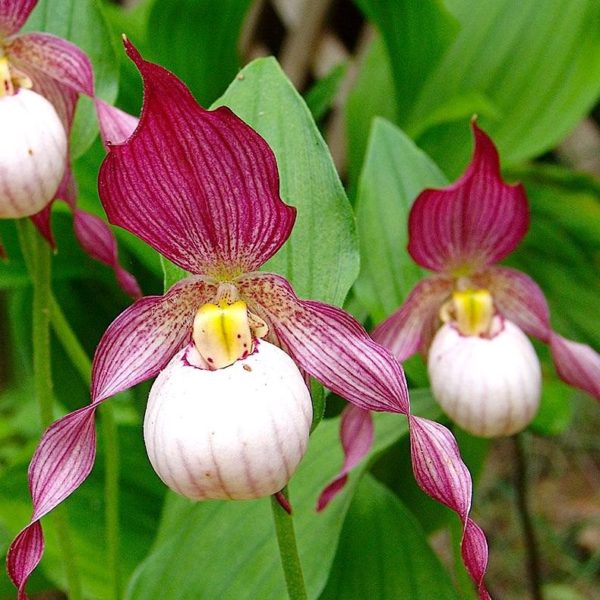
The winter-hardy variety is called the Queen’s Slipper. Bushes near a garden orchid with dense curtains. The flowers are numerous, located densely on the arrow. Petals brown with a purple tint, cream-colored lip.
In the Gisela gelb hybrid, the lip is first light pink, then painted in carmine color, white petals are able to glow at night. Hybrid Michael is characterized by low bushes with large purple flowers and dark stripes.
Beehive Office
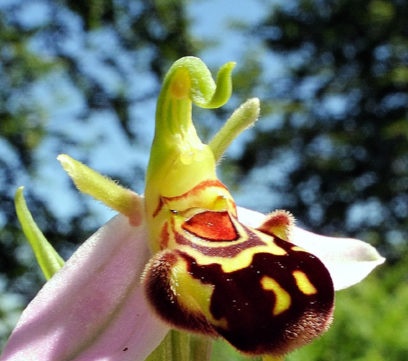
This variety differs from other hybrids in the structure of the flower. The lip resembles a bizarre smiling bee. On a flower branch 40 cm tall, a single flower grows with three raspberry petals and a motley inner part with a fluffy coating.
The office blooms in May or early June. Flowering lasts 2 months.
Bletilla
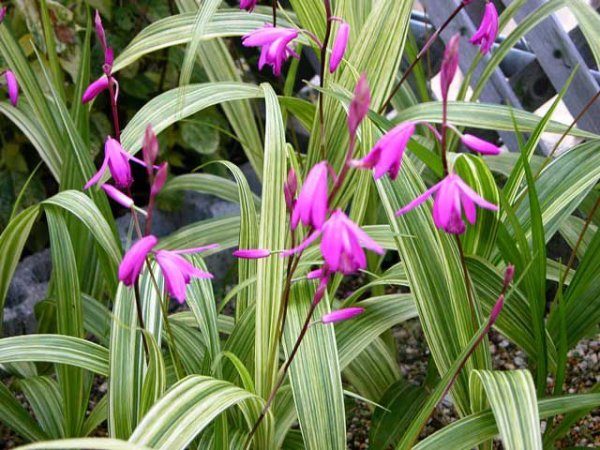
This species includes a dozen varieties, including striped Bletilla, hyacinth Bletilla. He likes a mild climate, grows in open areas, lit by the sun.
The roots of the pseudobulb are sometimes visible on the surface. Long folded leaflets. The stalk consists of pseudo-leaves adjacent snugly to the trunk. Pale lilac flowers form spike-like inflorescences. Colors can be white, purple, purple. Externally, the flowers resemble hyacinths.
Varieties of venereal shoe:
- swollen slipper - 40 cm high, a hybrid of the present and large-flowered varieties;
- large-flowered - flowers up to 10 cm in volume, colors: raspberry, pink, purple, on an arrow 50 cm long, 1-2 flowers;
- real shoe - grows up to 40 cm tall, flowers 7-8 cm in diameter with a yellow lip and red petals;
- spotted appearance - a trunk 30 cm high, with small purple flowers, covered with burgundy spots;
- royal variety in dyna up to 1 m, with large flowers 8-10 cm, on the arrow there can be 2-4 flowers, white petals and a raspberry lip.
Landing and leaving a shoe
Shoes can withstand frosts up to -35 * C, in the presence of snow with a layer of 5 cm or shelter with leaves, sawdust, needles. The plot for orchids should be shaded, the sun is acceptable until 11 in the morning, then after 15 hours. The shoes dry out under the sun. Plants can be planted near bushes or trees that will cover the flowers with their shadow. Orchids are planted on raised beds. Planted along fences or buildings on the north side.
Shoes are planted in the fall. A pit is dug in a diameter of 60 cm, in a depth of 30-40 cm. The mixture is laid at the bottom of the pit: peat, drainage, sand, bark, shell crumb. A plant is placed on top, roots are covered with earth, watered, mulched with needles, sawdust, bark. The buds during planting are located 1 cm deeper than the ground surface. Orchids bloom for 3 years after planting.
Care
Caring for street orchids is not difficult, but some care conditions must be observed. There is enough light for plants in the morning. Water the flowers in the morning or evening hours. Water is poured under the root or around the bush, moisture should not fall on the leaves. In summer, watering 2-3 times a week. Orchids do not like stagnation of water. Fungal infections can occur and kill a whole family of flowers. In winter, watering is stopped.
Overfeeding orchids is much worse than underfeeding. For tropical flowers, the substrate that was laid during planting is enough. Mulch also gives nutrients to plants. Once a month in the summer you can feed garden flowers with fertilizers for orchids. It is necessary to breed drugs 2-3 times less than indicated in the instructions. Fertilize plantings during irrigation with water.
Flowering features
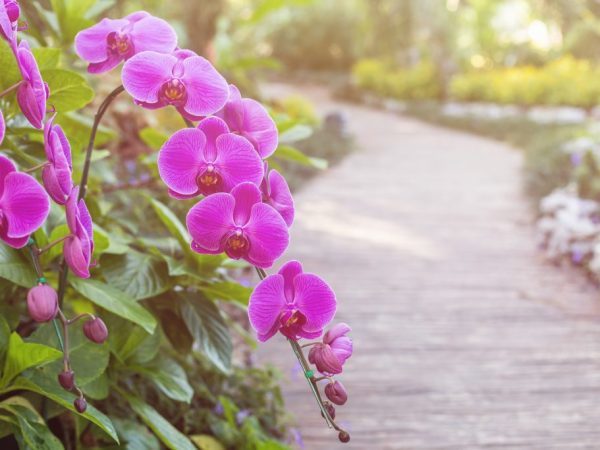
Indoor orchids bloom all year round, garden beauties produce flower stalks only in the warm season from May to August. It all depends on the type or variety of orchids. In May, buds appear, after a month they wither and the growth of green foliage and roots begins. From autumn to April, the plants begin to rest.
To achieve flowering, you must create the conditions:
- Lighting before lunch and after 4 p.m.
- humidity increase;
- fertilization for flowering;
- regular, moderate watering;
- protection from winds and drafts;
- not to allow a constant stay in the sun;
- after flowering, shading is necessary for the flowers.
Breeding
On their own, orchids rarely reproduce, so in the spring they divide the bush and plant in a new place. A mature orchid is chosen at least 4-5 years old, a healthy specimen without signs of disease. Carefully dig a bush from the ground so as not to damage the roots. Divide it into 2-4 parts. Each part should contain at least 2-3 kidneys. For each seedling, prepare a hole with a substrate and place a young bush in it, fill it with soil, water it, and mulch it. Care, as well as adult plants.
It is difficult to get an orchid using the seed method in the apartment, and it is quite possible to germinate the seeds in the garden. The process is complex, requires effort, patience and time. Seeds are planted for seedlings in a greenhouse, seedlings are transferred to open soil in the spring, when the earth warms up 13-15 * C. In winter, young animals are sheltered from frost. Many seedlings die, the strongest survive.
Recommended cultivation species
The most frost-resistant species in garden orchids are: Slippers, Palmatokorenniki, Orchis, Dremlik, Oreokhis spreading. Varieties of shoes resistant to cold: spotted, Yatabe, small-flowered, fluffy, royal, Tibetan.
To create compositions in the garden and in the country, all kinds of garden orchids are used, each of them is original and beautiful in its own way. Hybrids of the venereal shoe can be distinguished for creating landscape compositions: Anna, Emil, Gisela, Michael, Hank Small. Low-growing varieties are used for flower borders, and medium-sized plants are used for mixborders in the garden.
It is better to plant shoes in the corners of the garden, surrounded by ferns, cereals, in the shade of shrubs. Create copies of small forest edges. All plants are selected for growth so that they do not cover the majestic flowers.
Shoes are planted in rock gardens, stone gardens. Orchids are decorated with flower beds, have small compositions along the houses. Monopods of the same color of orchids look original.
Pest and Disease Control
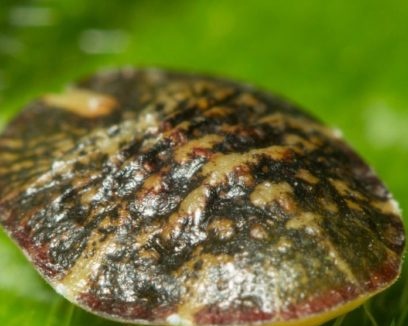
In the open air, the likelihood of diseases and insect infection increases. Fungal infections, viruses, bacteria, pests often cause the death of garden orchids. If you do not notice the problem in time, then you can lose a whole family of flowers.
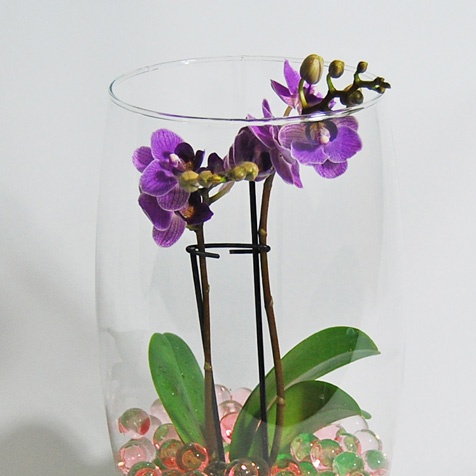 You may be interested in:
You may be interested in:Harmful insects
Pemphigi are white, live in the inner part of the sheet. Appear in dry air. They process flowers with soapy water and soda.
Scutellae are brown tubercles, like growths covering leaves and stem. Insects drink juice. Pests are removed manually, the affected leaves are removed, soap and soda are used, and the entire plant is washed.
Aphids can be green or black. Pests contribute to poor thermoregulation. Wash plants with soap or milk solution.
Thrips appear in hot weather, it is very difficult to get rid of insects when infecting flowers. They feed on the juice of the plant. Orchids are treated with chemicals against thrips.
Red tick - white or yellow spots appear on leaf plates. Leaves twist. Spray flowers with insecticides.
Whitefly - White midge eats leaves, they turn yellow and fall. Every 3 days treated with insecticides. All affected leaves are destroyed, sprayed all neighboring plants.
Spider mite - the outer part of the leaf is covered with yellow spots, the lower part is a white spider web. The surface of the leaves is washed, the trunk is washed with a soap-alkaline solution, with severe damage, acaricides are used.
In addition to insects, the orchid is attacked by snails, slugs. They are collected manually, traps are made for trapping. Greenhouse flies are killed by dichlorvos.
Disease
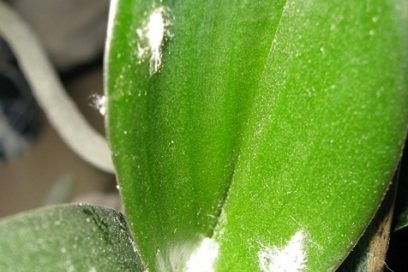
All fungal diseases are treated with fungicides: Topaz, Fundazole, Maxim. Fungi appear due to frequent watering. Orchids can get sick with fusarium, anthracnose, root rot, late blight, gray mold, spotting.
The tobacco mosaic virus is virtually untreated. If the plant's immunity is weakened, then it can die, it can infect neighboring orchids. Flowers are dug up and burned.
Bacteria, like viruses, are not treated. With bacterial spotting and bacterial rot, the entire sheet becomes covered with yellow and brown spots, dries, wrinkles.
To avoid trouble, it is better to buy orchids in specialized nurseries. In natural markets, you can get a sick seedling. Before buying, you should think about where to plant flowers, how to arrange them, what color is needed. When the picture of the garden composition is clear, you can safely go to the store for a certain variety of garden orchids. If beautiful perennials take root on the site, then they will delight flowering for many years. When dividing the bushes, you can get new seedlings and ennoble not only a summer cottage, but also share orchids with neighbors and relatives.

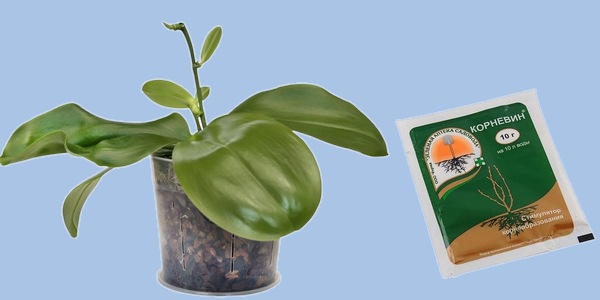
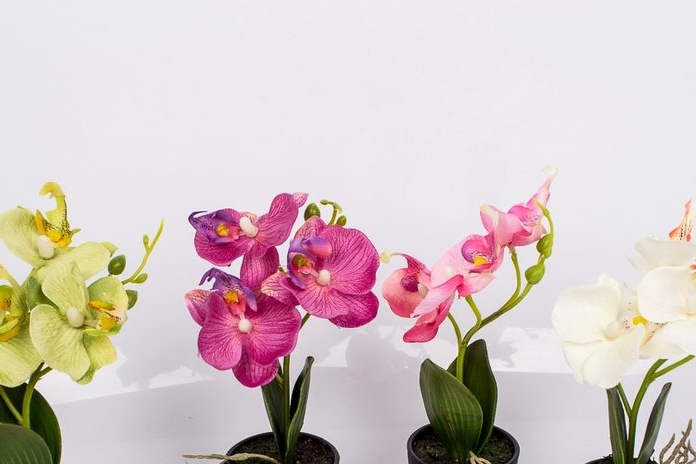
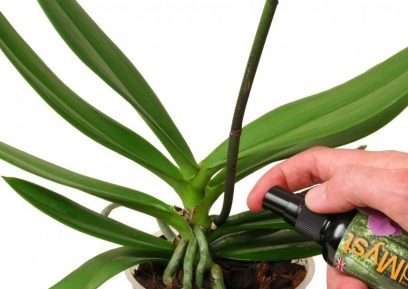
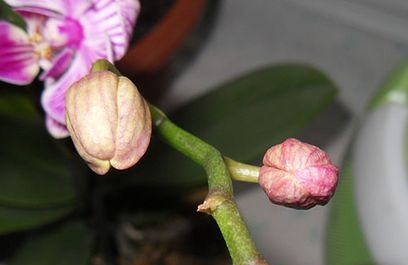 Reasons why orchids fall flowers and what to do
Reasons why orchids fall flowers and what to do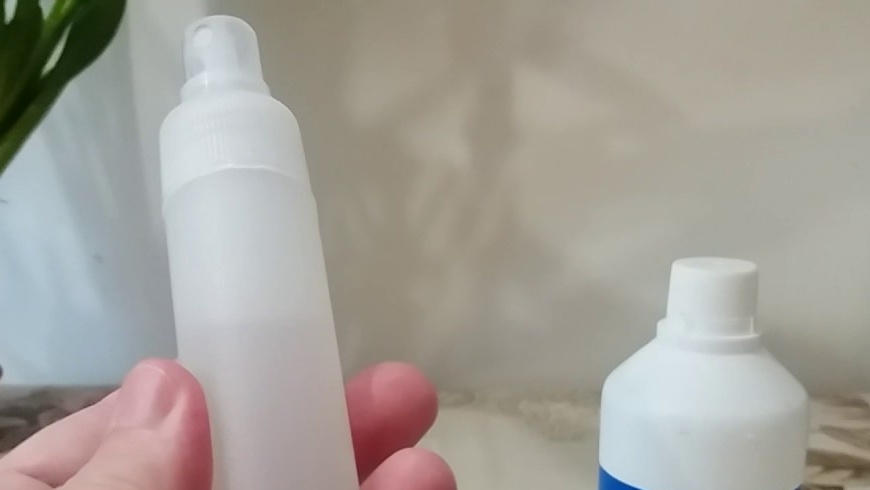 How to use hydrogen peroxide for orchids and why
How to use hydrogen peroxide for orchids and why Midges are wound up in the orchid: effective ways to get rid
Midges are wound up in the orchid: effective ways to get rid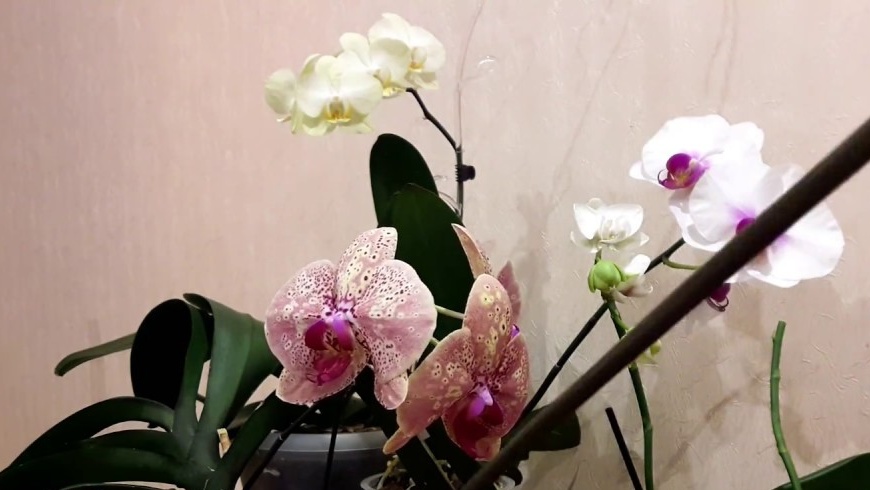 Is it possible to transplant an orchid during flowering
Is it possible to transplant an orchid during flowering